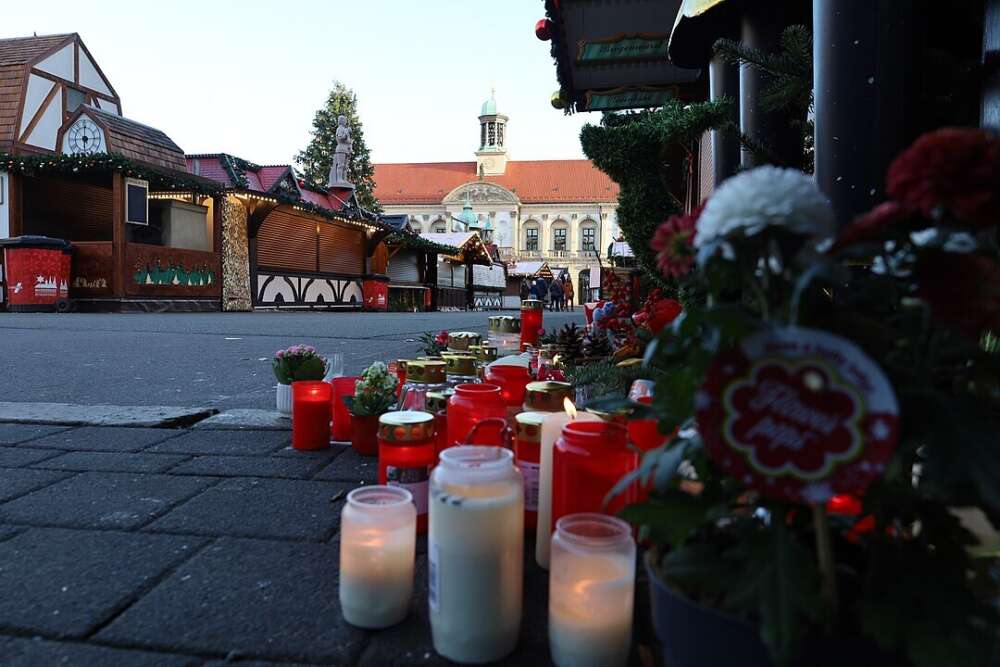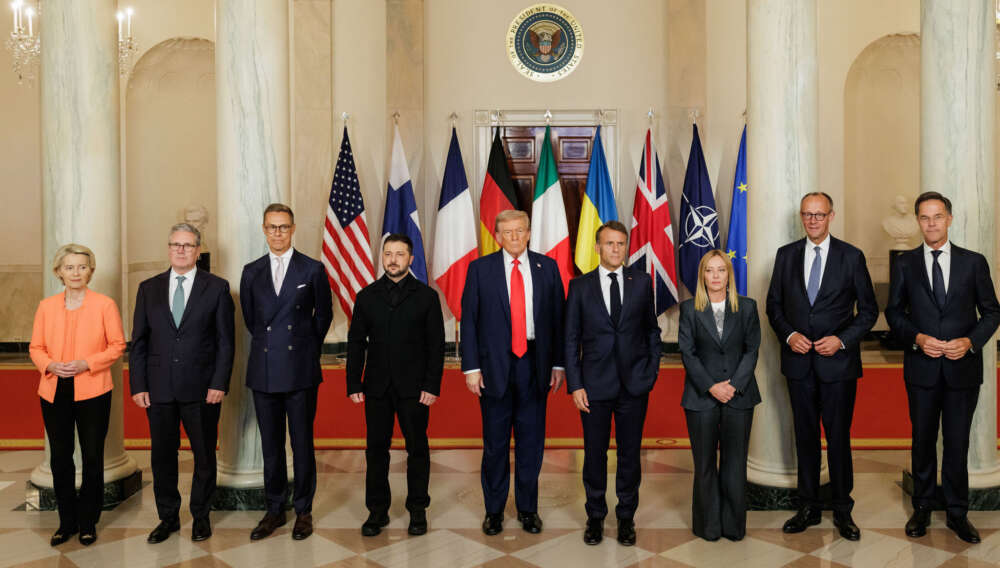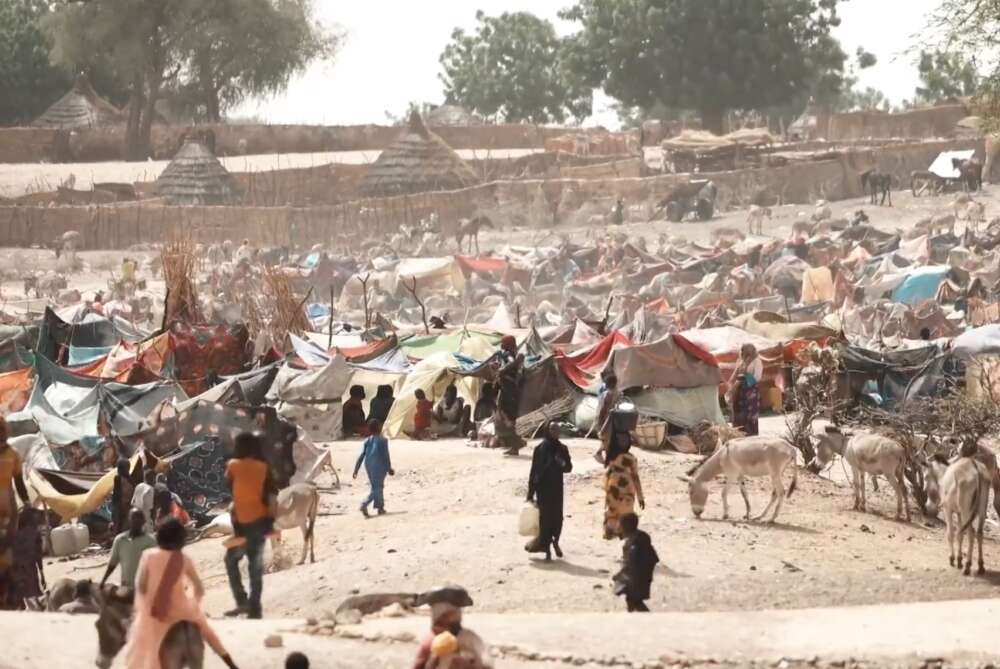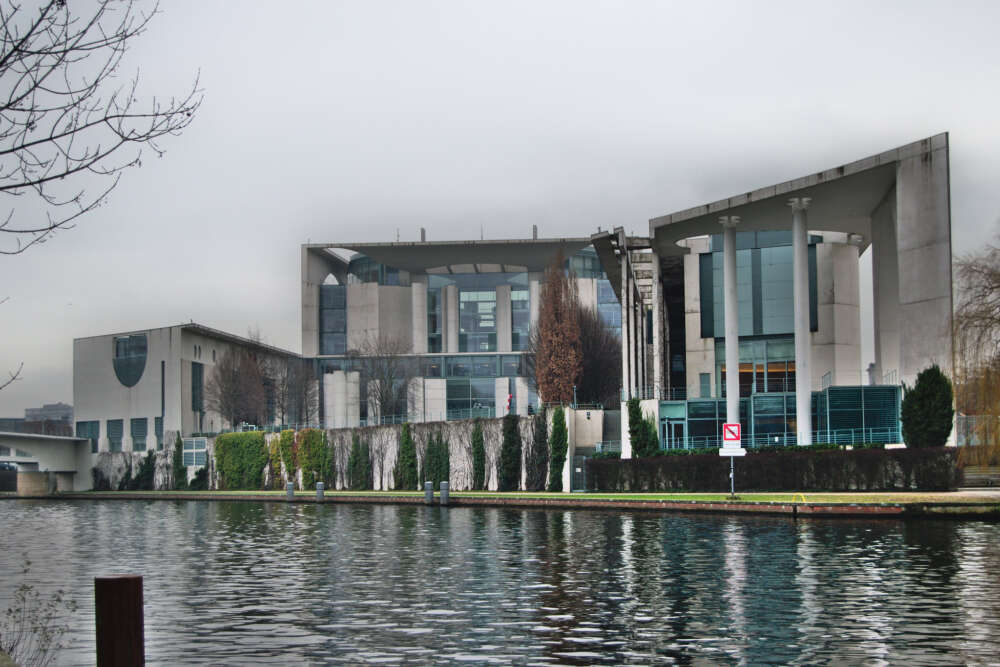Peace & Security Aid in Crisis: Rethinking Civilian Investment and Local Leadership

President Trump’s destruction of USAID, the United States’ aid agency, accelerates and drastically worsens a sharp downward trend in non-military peace and security assistance among many donors. This decline began in 2019 and has picked up pace recently, with most major donors making increasingly heavy cuts. Part of the problem is that global non-military investment in peace and security depends on a small pool of European and North American funders.
Meanwhile, global political violence has almost doubled since 2020, further propelled by increasingly frequent climate-induced shocks to resource-constrained livelihoods. The violence is forecast to claim 20,000 lives every month in 2025. Yet, this year we may see 34 percent less global investment in peace and security compared to the 2021 – 2023 average. This is an abdication of responsibility on the part of governments that could help but decide not to, and is at odds with their self-interest: the ramifications of these funding cuts will be bad for everyone, except the few that benefit from violence. No country can afford to ignore the ever-growing bloodshed and displacement.
Shrinking peace and security budgets have left the field at a crossroads. In this study, we assess the state of non-military funding and offer recommendations on how donors, advocates and local partners can ensure the remaining resources are put to best use.
We focus on the allocation of money and power between local agencies and external support. We build on two principles essential to the success of peacebuilding and conflict prevention — especially given the current funding constraints: (1) money should be allocated efficiently to the most promising interventions and (2) assistance should be organized and led as locally as possible to ensure long-term sustainability. These two principles are connected, particularly when considering how money is allocated between local actors and external supporters.
Investment is rapidly shrinking and most is allocated in a scattershot way
To assess the allocation of funding, we examine Organisation for Economic Co-operation and Development (OECD) statistics across several metrics for peace and security assistance. We find that, between its peak in 2018 and 2023 (the latest year for which data is available through the OECD’s Creditor Reporting System, CRS), global donor investment in peacebuilding and prevention fell by 12 percent ($343 million) and conflict assistance more broadly fell by 17 percent ($871 million). We know from donor budgets that additional, sharper cuts have followed since then.
We have also seen shifts in the funder landscape. The United Kingdom, which has long been among the top three donors in this area, completely dropped out of this leading group to fifth place, according to its total development funding for peace and security between 2021 and 2023. That left Germany, the European Union and the US as the top three funders: they jointly accounted for 66 percent of global spending in this field between 2021 and 2023. Further cuts by the UK and the US announced since, and the teardown of USAID, signal further trouble for the sector. So far, it does not appear that other donors — including non-Western donors — will be willing to fill the widening funding gap.
As of 2023, donors have continued to invest between three and five times less in conflict prevention than in acute crises. Our estimates show that preventive investments — peacebuilding and prevention spending flowing into countries that are not yet in acute crisis — tanked in 2023, falling to between $635 and $845 million, on par with 2015 levels. This funding falls far short of the level UN/World Bank models suggest is needed for successful conflict prevention.
Our research also shows that donors’ limited funding is spread too thinly. Major donors, including the top three, have a mostly scattershot approach to funding projects for prevention as well as for peacebuilding and stabilization. With rare exceptions, their country portfolios are many and small.
Localization efforts fall short of many donors’ commitments
To examine efforts to shift money and power from external supporters to local actors, we combine our quantitative analysis of spending patterns, based on OECD data, with a qualitative analysis of the allocation of decision-making power between external and local actors, based on interviews conducted in the Western Balkans (Kosovo and Bosnia & Herzegovina) and Gulf of Guinea (Côte d’Ivoire and Ghana).
We find that very little of donors’ peacebuilding aid directly goes to local actors — and where it does, the money flows to recipient government institutions rather than local civil society. Even though donors rarely fund local actors directly, they almost always rely on them for crucial contributions. Instead of in direct partnerships, donors often work through intermediary organizations that manage budgetary and administrative processes. In this way, money still gets transferred to local actors, even if not directly, but much of it is spent paying for the intermediaries.
In the rare cases where donors fund local actors directly, they do so almost exclusively through project rather than core funding. According to the OECD, this leaves local actors with a type of funding that offers them fewer opportunities to pursue their own interests, compared to when they receive core funding. In practice, however, we found that local actors are often able to shape peacebuilding interventions in some way, even when financed through project funding. We also found that there are significant hierarchies between local partners: the lower they are in the implementation chain, the less influence local partners have. Those at the very bottom of the chain are often not even compensated for their work on donor-funded peace-and security-related projects.
We cannot afford to let peace and security assistance drop off a cliff
Both military and non-military assistance to peace and security are central to saving lives and safeguarding the core security interests of countries around the world. But the palpable crisis of confidence in the field of civilian peace and security, and the present and expected funding cuts mean donors must fundamentally rethink their approach. By all indications, violence and displacement are likely to keep rising over the next few years. However, we might also see opportunities for peace in places like Gaza, Ukraine or Syria. Seizing these opportunities to forge a path toward stability and sustainable peace will require quick and decisive action on the part of the global community — and it will be expensive.
If donors keep chipping away at their foreign assistance budgets for peace and security, we risk a cascading effect where more and more funders pull out and the combined impact of their funding drops off entirely. This tipping point is not far away.
Recommendations
We strongly suggest a different path. We have developed nine recommendations for funders, peacebuilding and prevention advocates, intermediaries, and local organizations on how to rethink and reinvest in assistance for peace and security, and how to empower local partners.
For Donors
1. Redesign your support to leverage political opportunities with targeted interventions.
2. Calibrate country-specific and regional initiatives to fit differentiated ambitions.
3. Build in-house capacity to analyze and engage with local political dynamics — or outsource to intermediaries.
4. Adapt support to the needs of local partners.
5. Tailor co-creation processes with primary and lowest-level local actors to local capacities.
6. Provide fair and efficient funding to local partners along the entire subcontracting chain — more core funding, no unpaid labor.
7. Invest in research to understand the impact of direct local and indirect peacebuilding funding.
For Advocates
8. Refocus on accountability for impact.
For Local Organizations
9. Leverage key position in peacebuilding projects.
If donors do not act quickly to rethink and reshape peace and security assistance, they risk squandering even the limited opportunities for greater peace and security that are currently available. A lack of targeted assistance may prove to be a crucial bottleneck for Syria’s transition after the fall of the Assad regime, Ukraine’s path out of war, Nigeria’s progress against Boko Haram and Iraq’s, as well as Lebanon’s reconsolidation. This year may bring additional opportunities, like laying the groundwork for peace in Gaza, preventing large-scale escalation risks in South Sudan and Ethiopia,1 and pushing for sustainable peace in the Western Balkans, which would be far more cost-effective for Europe than periodically reinforcing its military forces in Bosnia and Kosovo.
In each of these places, insufficient investment in political change toward stability, security and peace risks another round within the vicious cycle of violence, which will plunge these countries even deeper into the conflict trap. The negative knock-on effects of this violence will reverberate across neighboring countries, along trafficking routes and through global energy.
No country can afford to ignore or hide from this stark reality. For those directly affected by violent conflicts, this is a question of life or death. For those observing these trends from a safe distance, cushioned by wealth, the devastating effects of the dramatic decline in global funding for peace and security constitutes a moral stain — one that will only get worse. Not only that, but allowing global violence to spike, unabated, threatens key donor interests, from low-cost international trade and safe supply chains, to limits on drug trafficking, terrorism and mass migration. Donors need to chart a different path, one characterized by smarter, more strategic, and, yes, more investment in peace and security — not just in defense.
This study was funded by the Robert Bosch Foundation. The views expressed are those of the authors and do not reflect the position of the Robert Bosch Foundation.
1 Crisis Group, “South Sudan on the Precipice of Renewed Full-blown War,” Alert, March 5, 2025, accessed March 9, 2025, https://www.crisisgroup.org/af…; Harter, Fred, “A power struggle in Tigray risks Ethiopia’s peace deal,” 4 March 2025, The New Humanitarian, accessed 18 March 2025, https://www.thenewhumanitarian…







